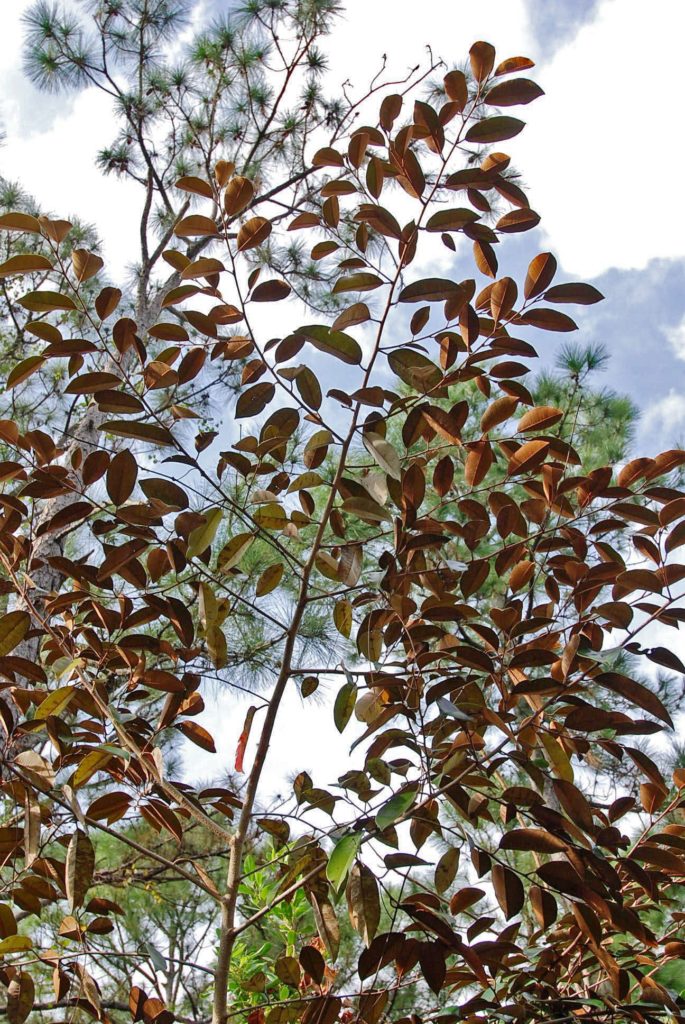
Satin Leaf
Chrysophyllum oliviforme
Satin Leaf is native from the Florida Keys up to Merritt Island. It is found in coastal hammocks where the soil is rich, moist, well drained and no longer salty; especially in the vicinity of Mangroves.
Satin Leaf can reach up to 50 feet in height. It can survive some cold, yet freezing temperatures may kill it to the ground. Shoots will sprout from the roots and a new leader can then be selected.
The shiny, dark green upper leaf surfaces and rusty undersides of Satin Leaf will dazzle you as they shimmer in the wind. Birds are easy to observe as they move through the evenly spaced branches while eating the olive sized fruit.
This is edible and contains enough chicle to accumulate into a ball of gum after placing several in your mouth and spitting out the pits. It has a pleasant prune flavor.
You may not want to plant this tree close to walkways as the fruit will stick to your shoes and find its way onto your white livingroom rug. You can shake the tree and most of the ripe fruit will fall and can easily be swept up.
Find a protected location to plant and mix with other hammock trees like Paradise Tree, Mastic, Lancewood, Pigeon Plum, all of the Stoppers and an understory of Wild Coffee, Marlberry, Coontie, Wild Plumbago, Beautyberry and Basket Grass.
When planting Satin Leaf, you will find that the roots have circled many times inside of the pot. Do not cut them! Just unravel the roots and place the ends inside of an extra deep hole.
Fill in carefully so that these are fully stretched and go down deep with the base of the plant at ground level.
Mix in lots of organic matter and form a ring with the extra soil around the top of the hole. This will wash in and take the place of the organic matter as it oxidizes. It also makes watering easy by preventing the water from running off.